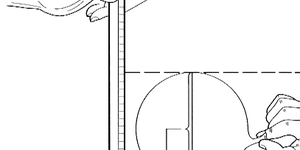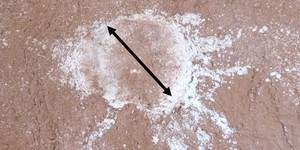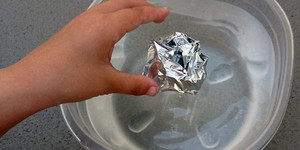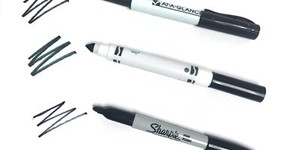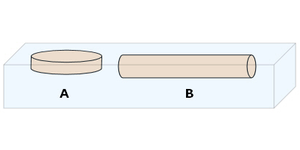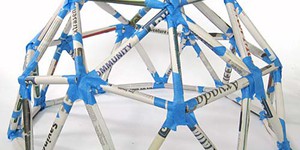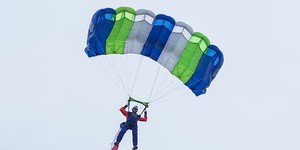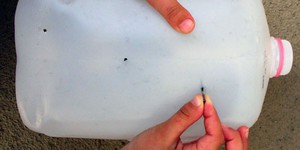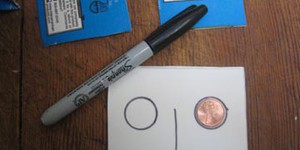Others Like “Juice Box Geometry” (top 20 results)
|
How much air do you think you breathe in when you take a deep breath? Can you increase your lung capacity by exercising regularly? Do athletes have greater lung capacity than non-athletes? This project shows you how you can find out.
Read more
Have you ever heard someone say that the moon is made of cheese? Even though the craters on the surface of the moon resemble holes in Swiss cheese, we know that this common myth is not true. Find out how craters are formed and why they are different sizes by doing this simple science project.
Read more
Where do you get your best ideas? At school with your friends? When you are out for a bike ride? Over 2,200 years ago, a scientist named Archimedes got one of his best ideas when he sat down in his bath. Eureka! He went running through the streets without even bothering with his clothes. What was he so excited about? He had discovered that when objects, like his body, are placed in water, water is pushed out of the way. Have you noticed that, too? The weight of the water that is pushed out of…
Read more
Have you ever looked at sunlight through a prism? If so, you know that the prism can separate the sunlight into many different colors of light — a rainbow. Like sunlight, chemical mixtures can also be broken into their component parts. One way of doing this is a simple technique called paper chromatography. What do you think you will see if you use paper chromatography to look at the components of black ink? Is black ink just black? Find out for yourself!
Read more
This science project presents an interesting puzzle. A disk of wood will float face-up; that is, with its circular cross-section parallel to the surface of the water. A long log of wood, however, floats on its side with the circular cross-section perpendicular to the surface of the water. If you think about it, disks and logs are both cylinders. Is there some intermediate length of cylinder that floats with the circular cross-section at a tilted angle? Try this experiment to find out!
Read more
Did you know that you can figure out how much sugar is in a liquid without ever tasting it? In this science fair project, you will learn how to measure the concentration of sugar dissolved in a liquid by using a laser pointer, a hollow prism, and some physics. You will discover how refraction, or the bending of light, is the key to measuring the sugar content of a liquid with a laser pointer.
Read more
Have you ever seen a geodesic dome? Geodesic domes are approximately sphere-like (or partially sphere-like) structures made up of interconnected triangles. A famous geodesic dome is Spaceship Earth at EPCOT in Walt Disney World, Florida, but geodesic domes are also commonly found as climbing domes at playgrounds. In this science project, you will get to build a geodesic dome using rolled-up newspapers and tape. How much mass do you think your dome will be able to support? Build one and find out!
Read more
How does a parachute work? Do bigger parachutes work better than smaller parachutes? Find out in this science project if the size of the parachute matters.
Read more
It's hard to believe that the same water that you use every day to quench your thirst, cook with, bathe in, swim in, and wash your clothes and dishes, is capable of another trick—it can make electricity! Electricity can be generated through the flow or through the fall of water. A big, fast-flowing river, for instance, contains a lot of moving energy that provides enough pressure to turn the blades of a turbine and run an electric generator. This same pressure can also be created though…
Read more
How do astronomers collect stardust? They design and build satellites that are launched into space to collect particles on specially designed panels. Satellites can be sent to orbit around an object of interest: a planet, moon, or comet. In this experiment, you can build your own mini satellite and use it to collect some pretend stellar debris. If you simulate an asteroid impact, how much stellar dust will your satellite collect? Will placing your satellite at different "orbital" distances from…
Read more
|
Explore Our Science Videos
Can you solve this air pressure puzzle?
Flying Helicopters on Mars - Paper Models
How to Make Paper Circuits

